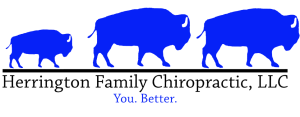What is Medial Epicondylitis?
The elbow has two epicondyles. These are the prominent bones that stick out on either side of the joint. With the arm extended and palm facing upwards, the bone on the side closest to the body is the medial epicondyle, and the one on the opposite side is the lateral epicondyle.
What is “Epicondylitis”?
Epicondylitis is the clinical term for the inflammation of the bony projection, known as the epicondyle. This inflammation is typically due to overuse, trauma, or excessive straining.
How does Medial Epicondylitis occur?
The medial epicondyle is the specific point of attachment for all of the muscles of the wrist and hand that allow you to curl the wrist as well as bend the fingers. While these activities are typically routinely used in a minor capacity, there are particular activities that excessive strain this area. The most common way to injure the area is via repeated eccentric contractions. This means the muscles are shortening while another force is trying to lengthen them. The most common method to accomplish this is golfing.
What makes golfing so particularly straining to this area is the movement in the golf swing, as well as the impact of hitting the ball (or ground). As the club moves from behind the golfer to the front the head of the club strikes the ball. This force drives the ball forward and wants to drive the of the club backwards but the wrist and forearm prevent that. By holding the club in place on the follow through, more force is imparted to the ball, but an equal amount of force is drive into the wrist and forearm. This force tries to bend the wrist backwards, while the muscles attached to the medial epicondyle are trying to hold the wrist in place. This causes micro-tears in the muscle and with repeated events, may start to cause excessive pulling on the tendon that anchors the muscles in place.
When that tendon becomes damaged and inflamed, this is known as medial epicondylitis.
Golfing isn’t the only cause of this but it is the most frequent. Due to this, this injury is typically called “Golfer’s Elbow”. Any job that actively flexes the wrist frequently can exhibit the symptoms of this condition. Food service and office workers may also have irritation from overuse, rather than from traumatic forces.
Treatments for Medial Epicondylitis
From a chiropractic standpoint, a proper diagnosis is important. Is the tendon inflamed? Is it simply pain in the region due to muscular damage? Is the joint restricted in its movement? Is the overuse of the forearm in compensation due to an underlying shoulder injury? Is the overactivity of the muscles in the forearm due to irritation stemming from the nerves in the neck and shoulder? All of these considerations need to be addressed. However, if the case is determined to be true medial epicondylitis, there are several treatment options available.
The first option is to brace the wrist and simply let the area heal. Without continued overuse, the region should heal on its own. This is the easiest method, but also the slowest.
The second option is myofascial release to the region. Once the particular movements and causes are identified, the muscles and fascia can be stimulated and stretched to alleviate the over activity and allow the muscles to heal.
The third option is therapeutic ultrasound. This is a much more focused and gentle treatment option, but it works very well at breaking and chronic scarring damage to the tissues of the area.
Are you experiencing medial epicondylitis? Work with a Buffalo Chiropractor that can help you.
Here at Herrington Family Chiropractic, not only does Dr. Herrington excels at spinal manipulation, but is also highly proficient at soft tissue manipulation. Utilizing techniques such as Myofascial Release Technique (MRT), Graston, Soft Tissue Massage, Ultrasound therapy and Low Level Laser Therapy (LLLT) to ensure patients can be effectively treated for all their aches and pains.
If you have been living with arm pain, please contact us to schedule your consult.
